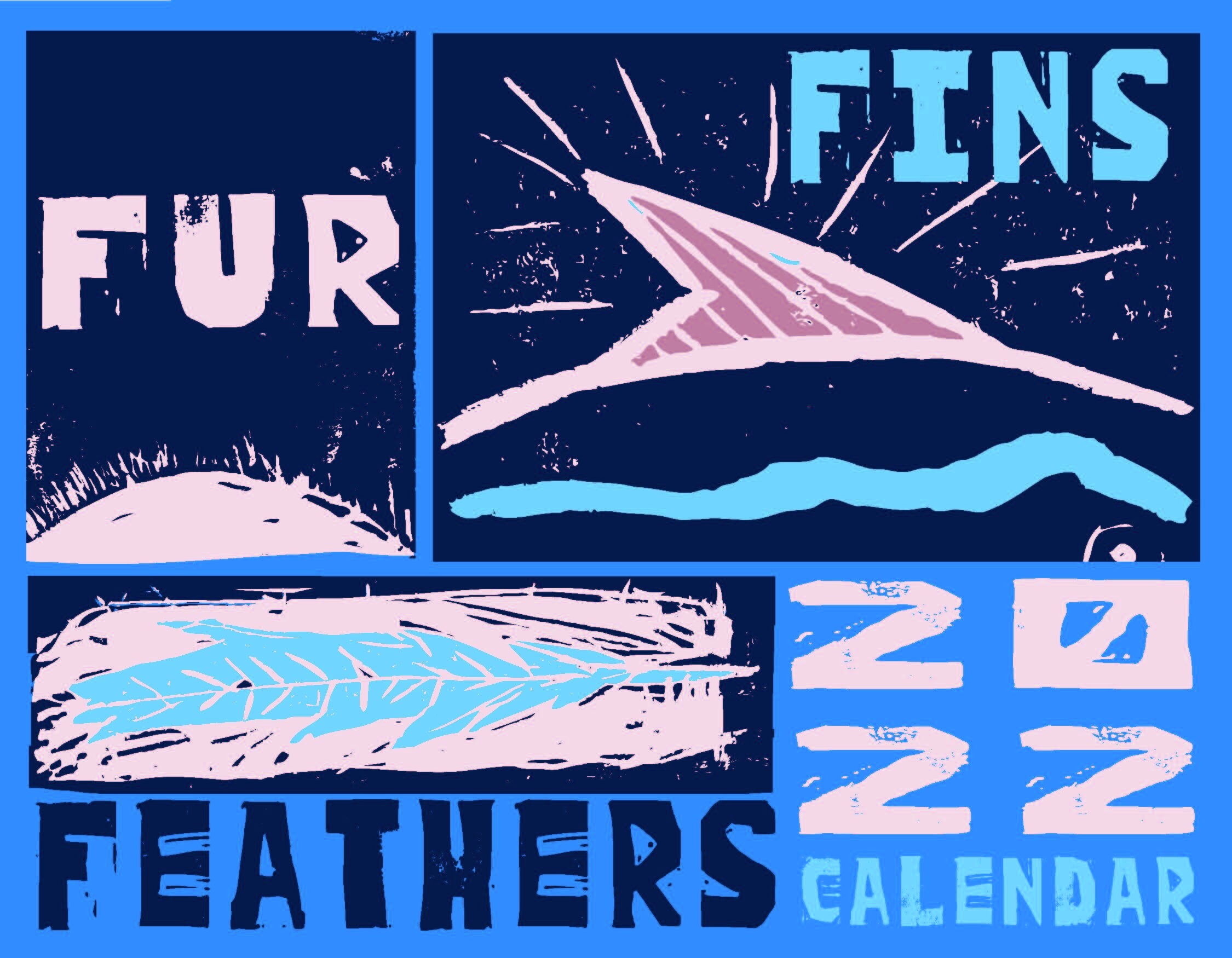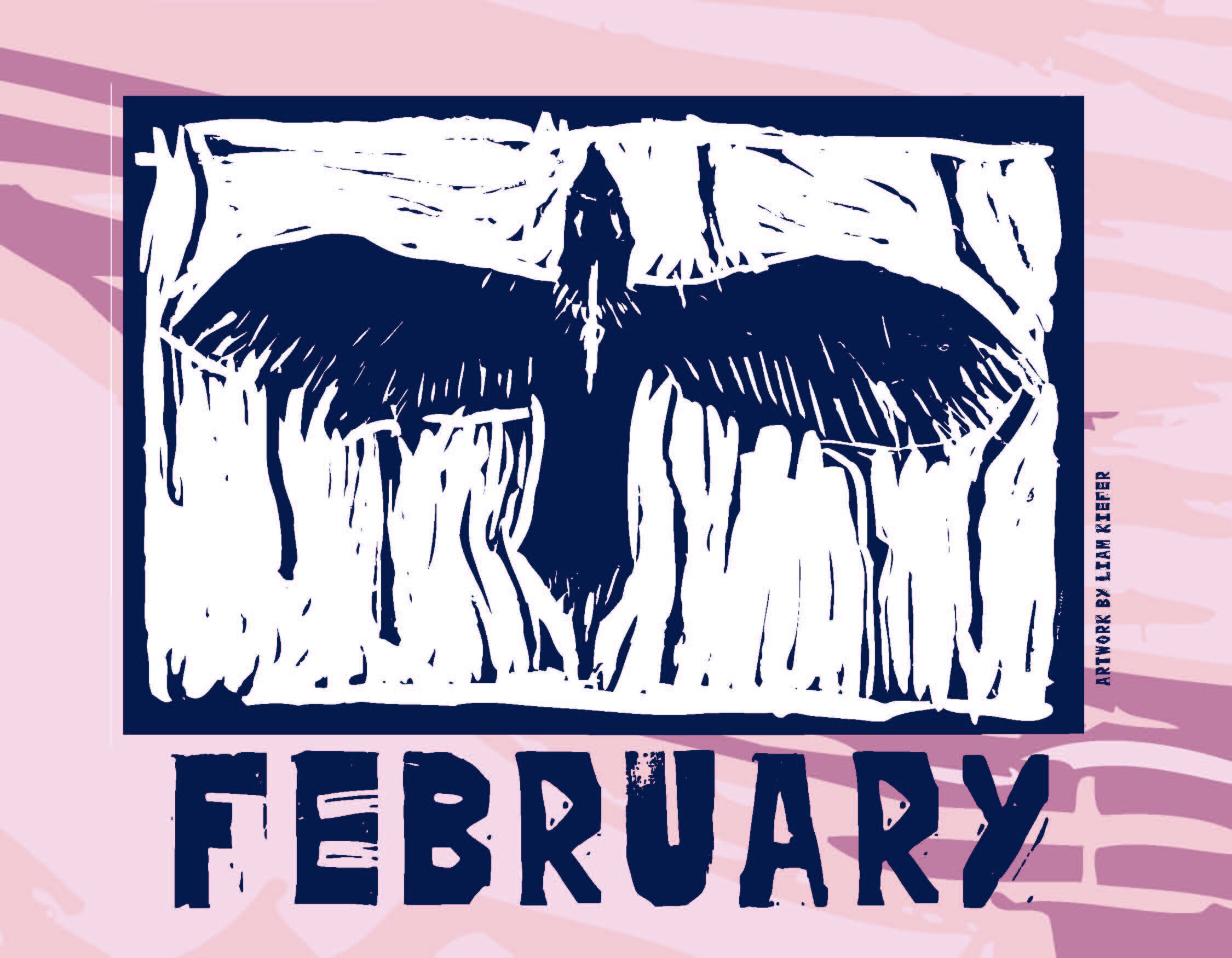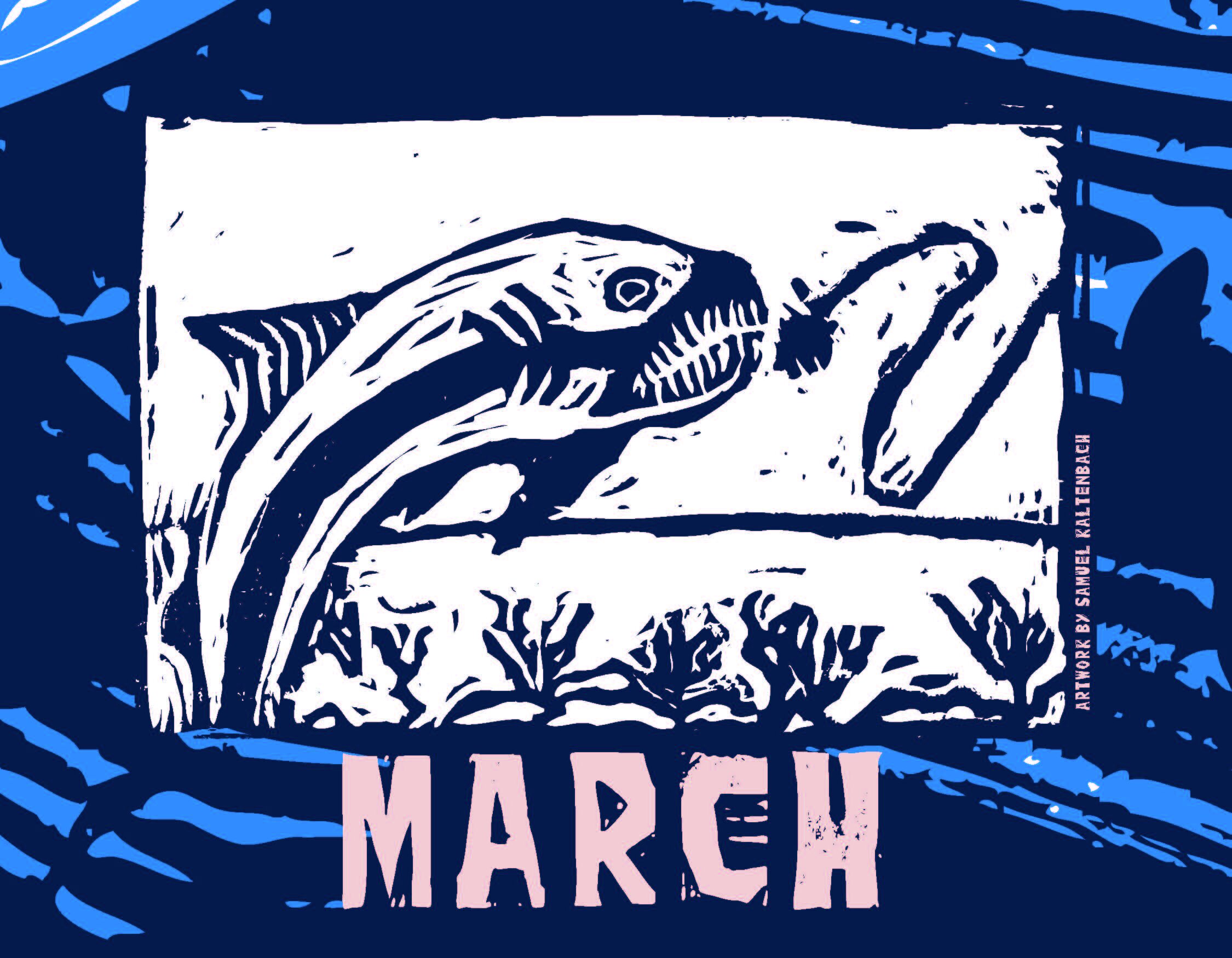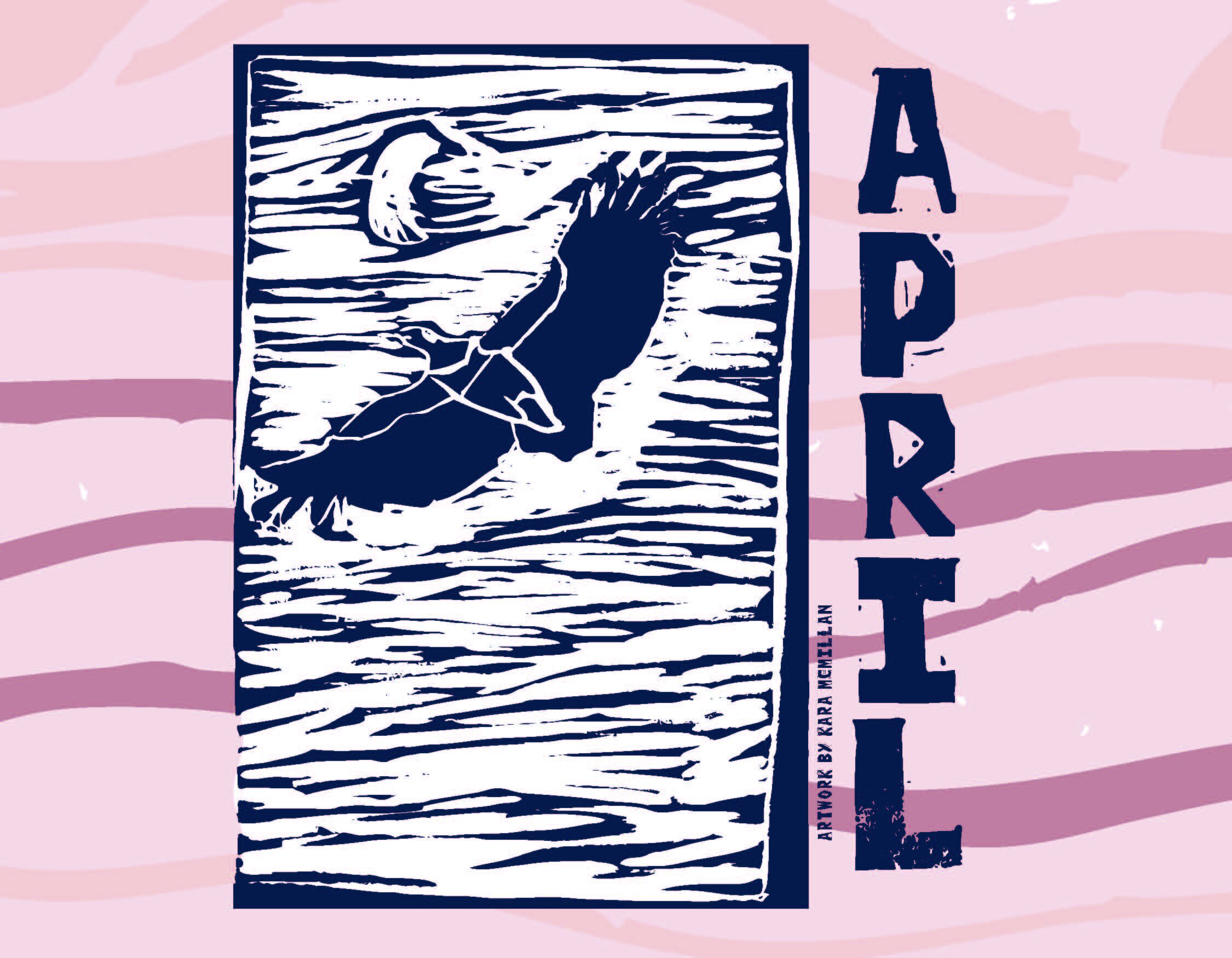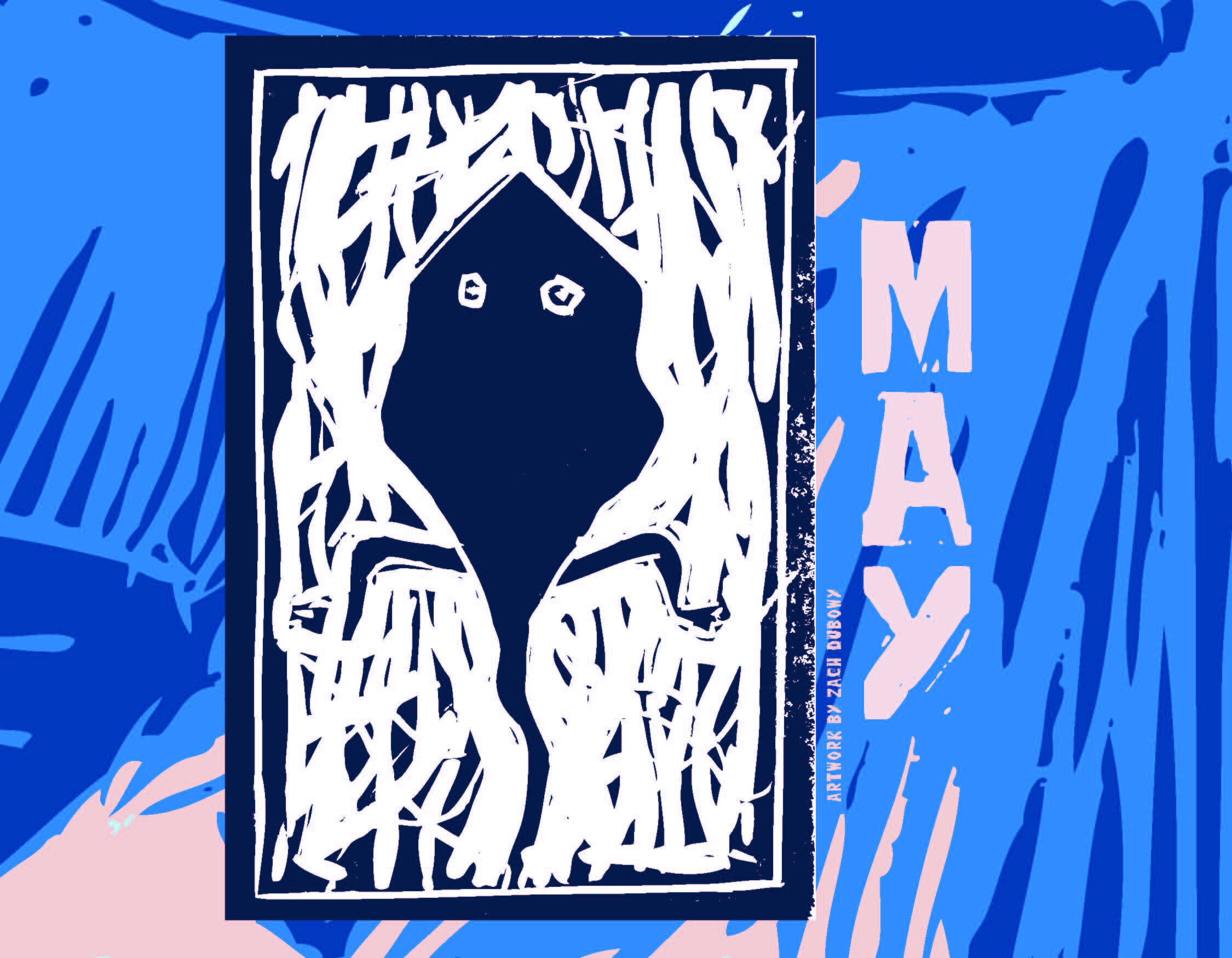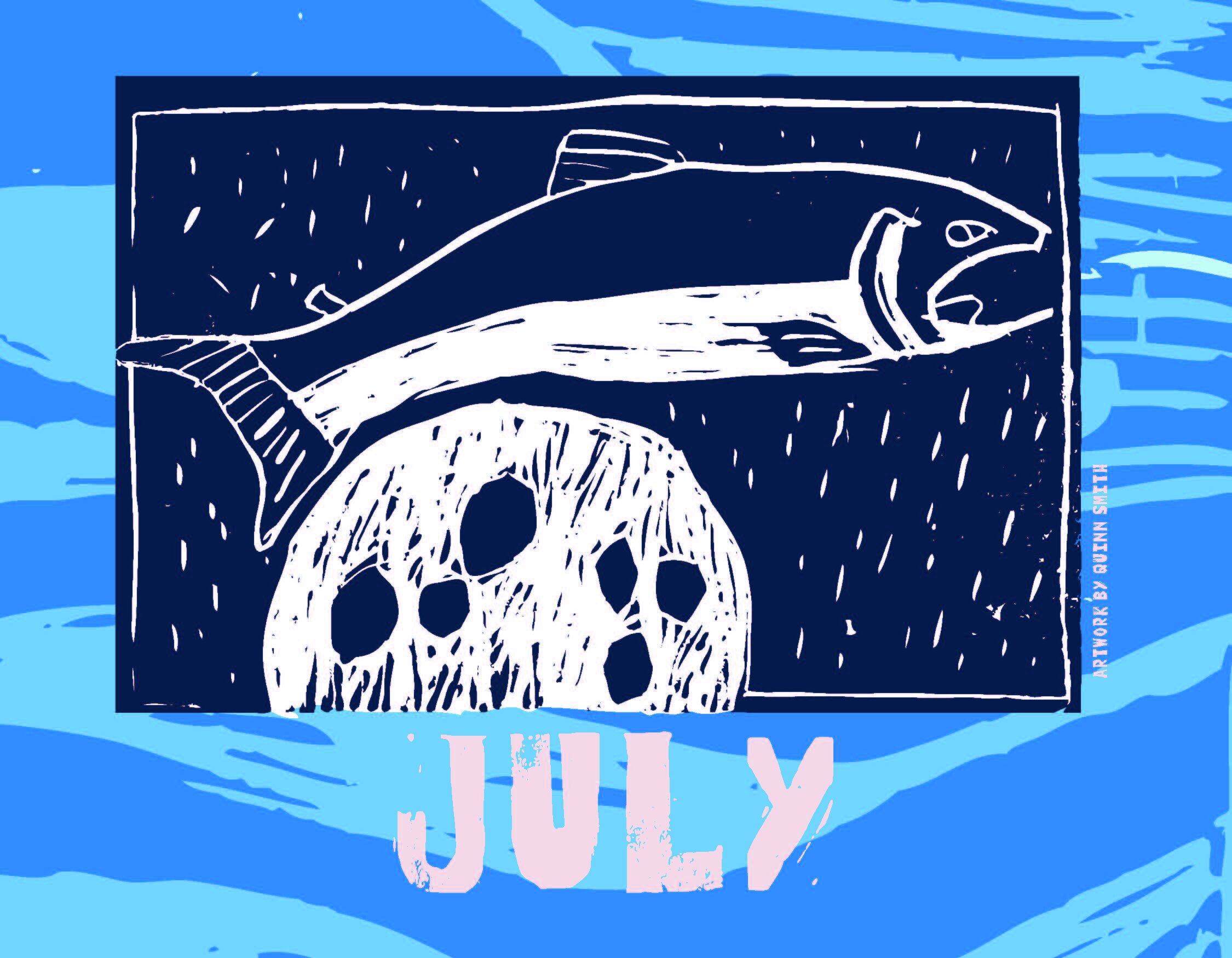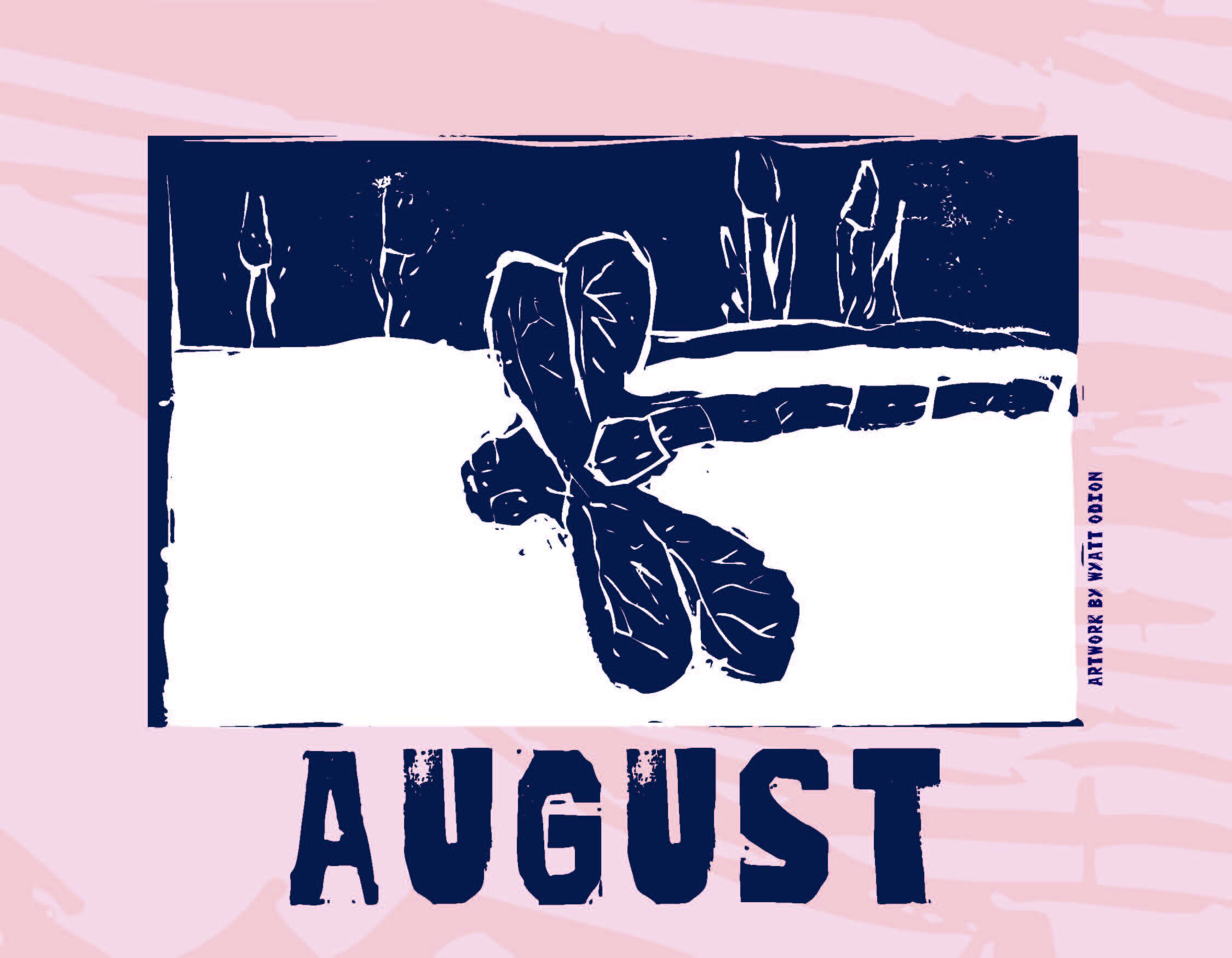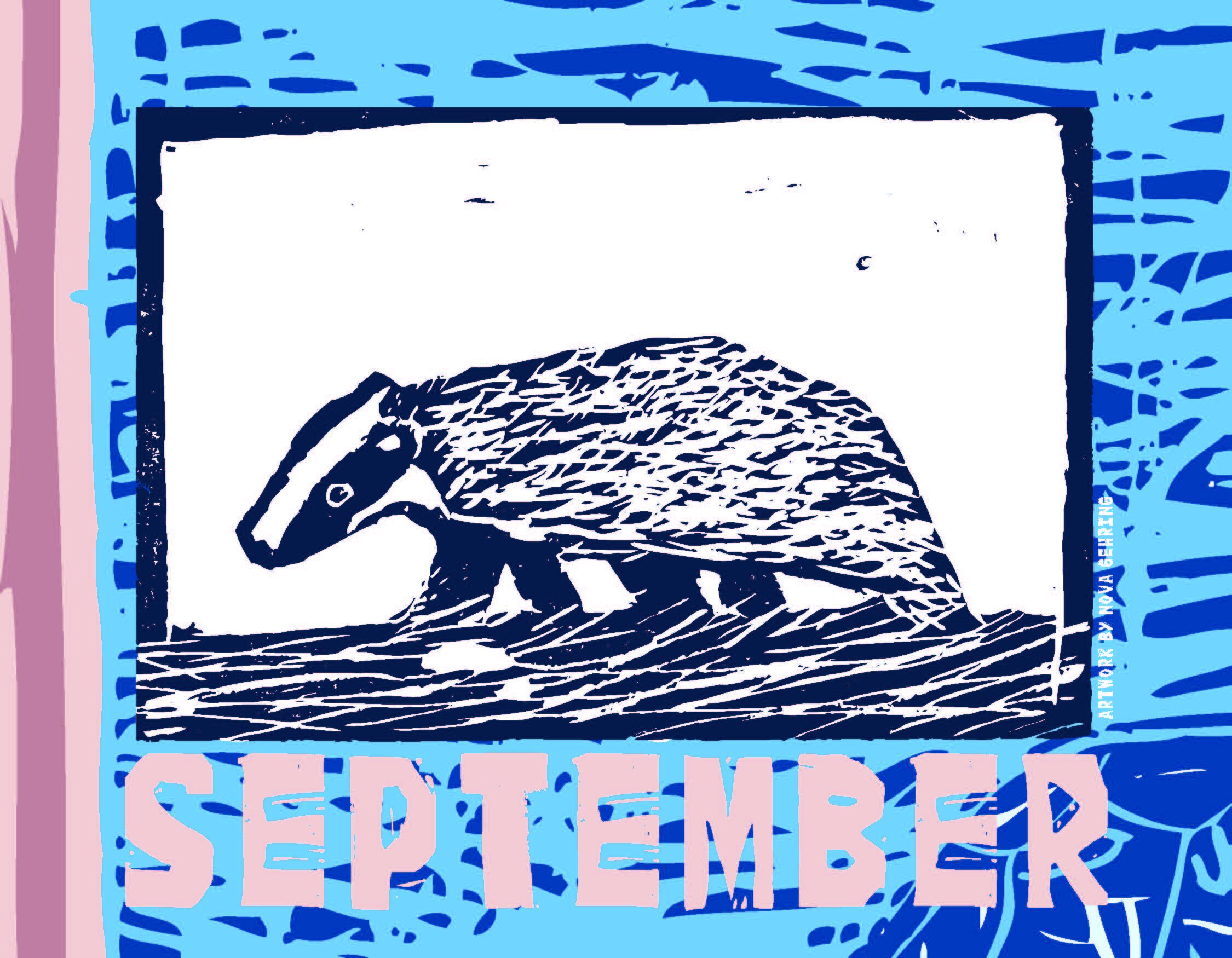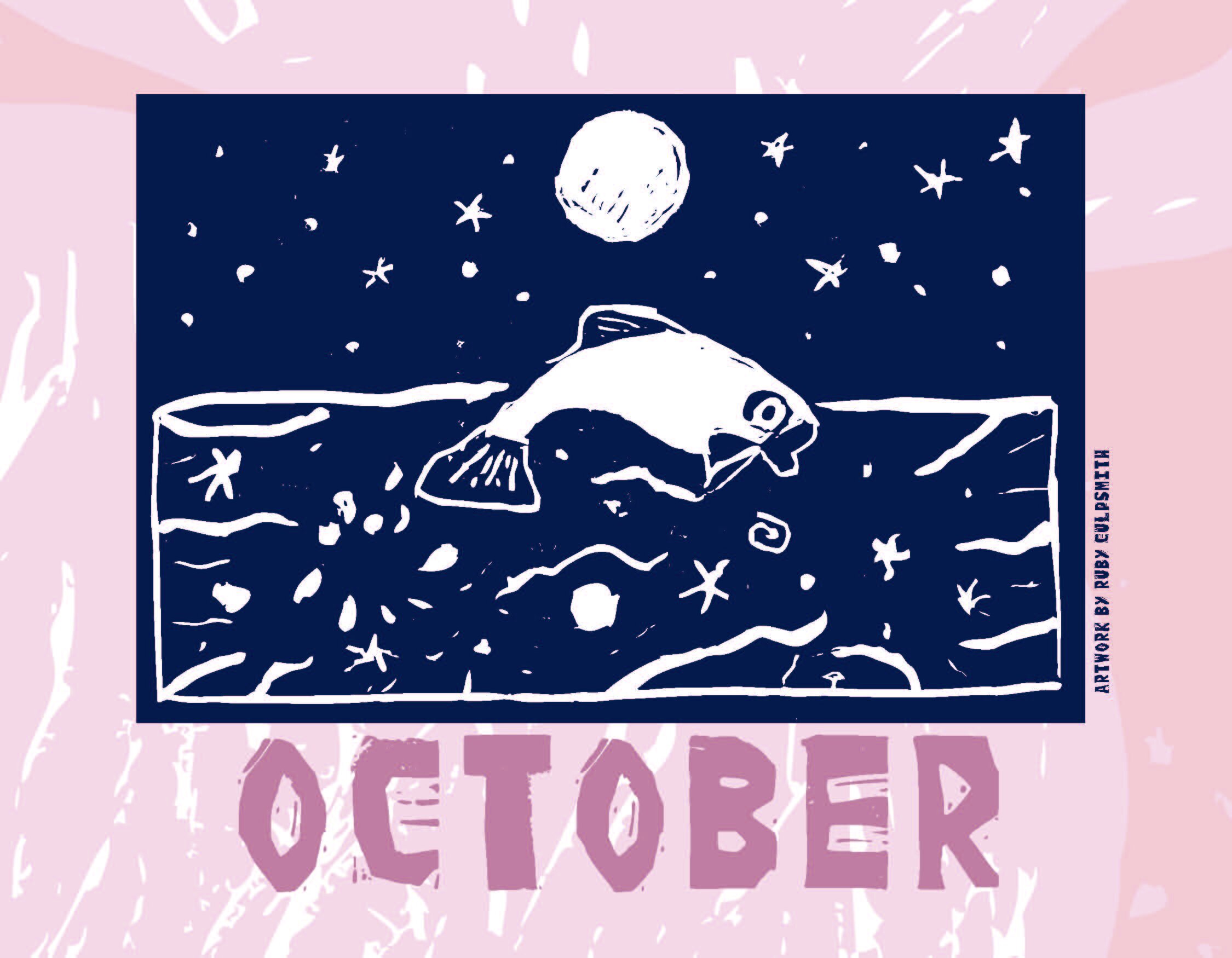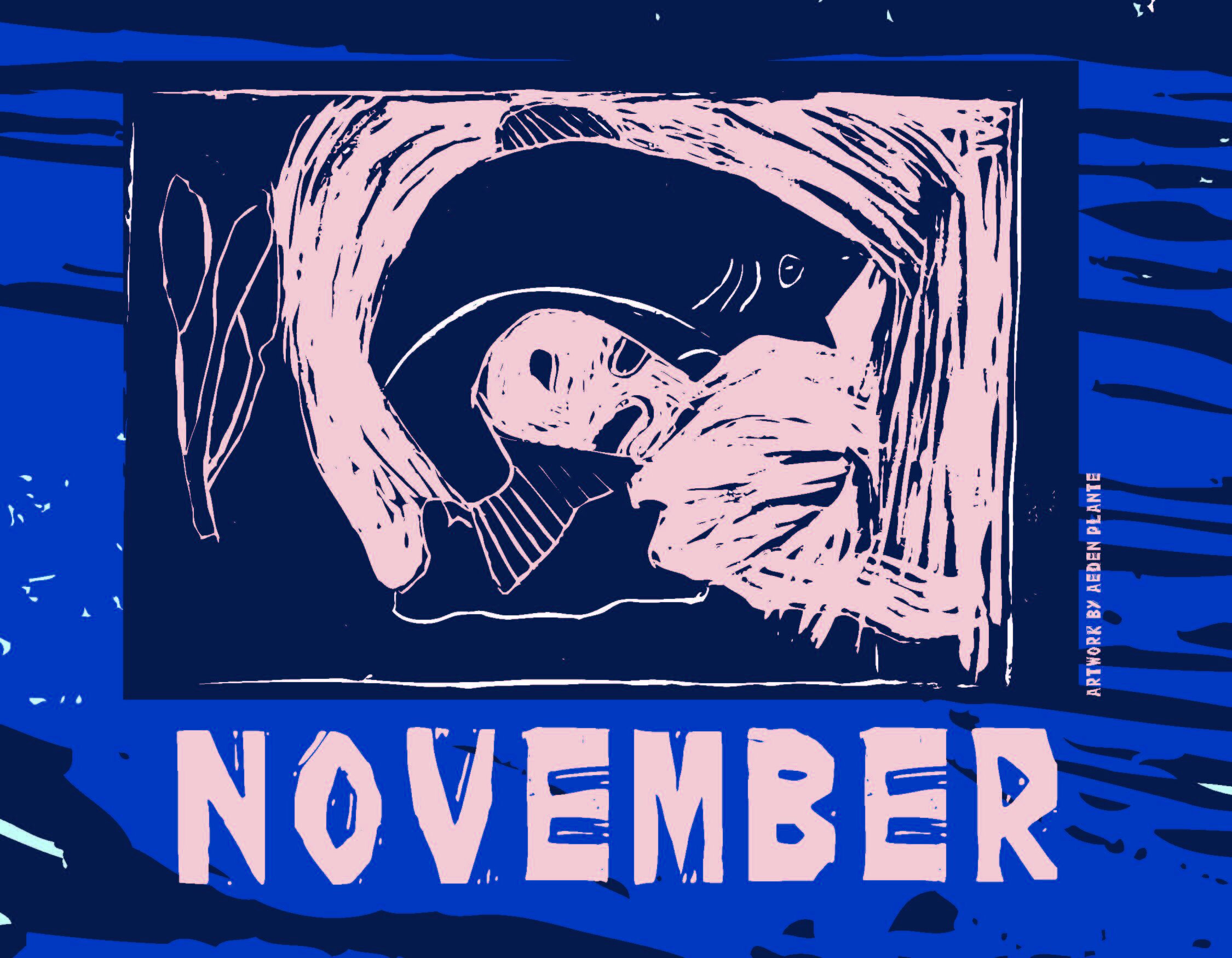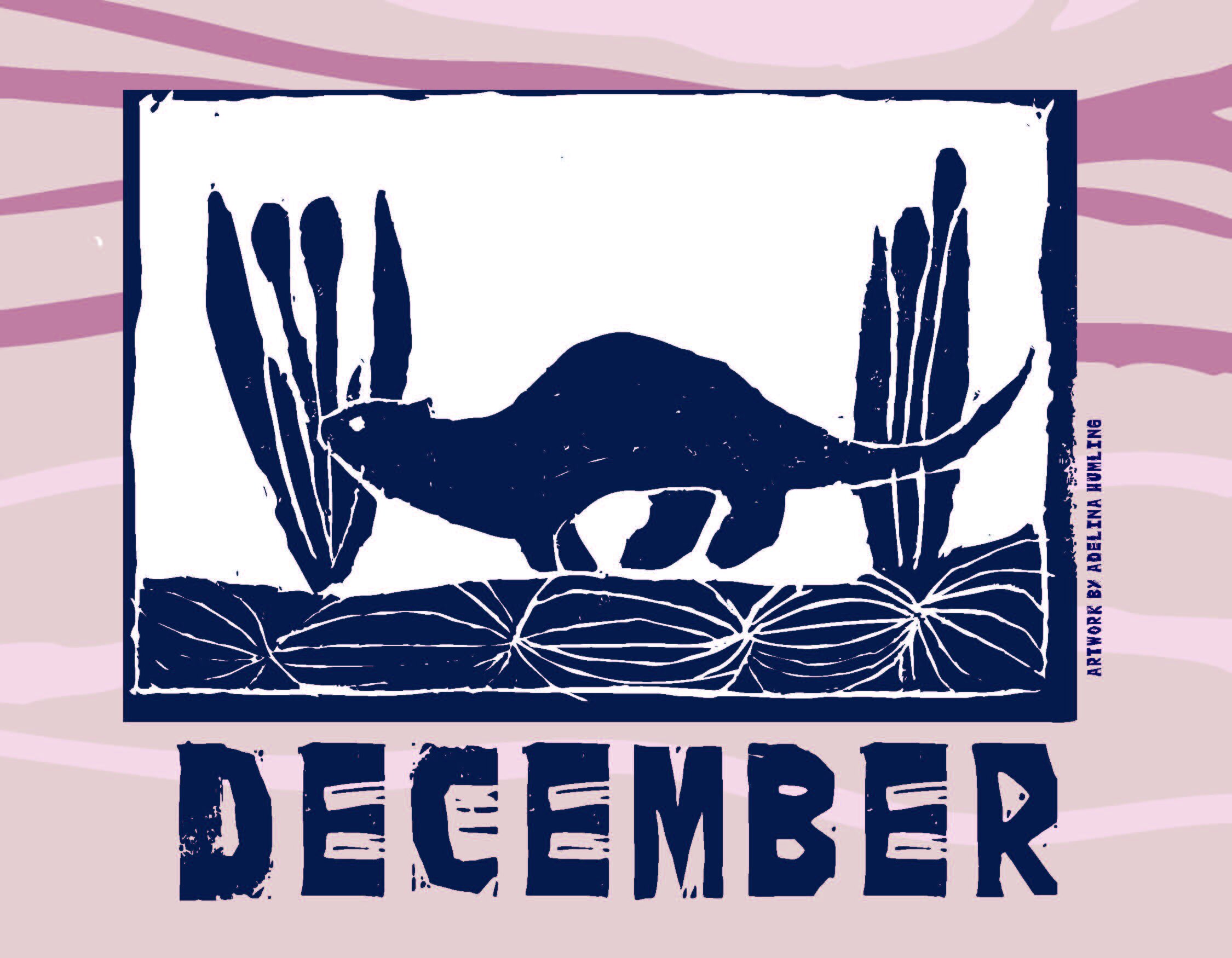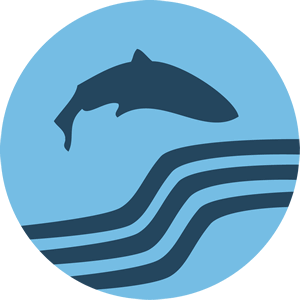Salmon & Art
“Living With the Methow River” Calendar
Our annual wall calendar features student art in a collaborative effort between local ecologists, artists, and the 6th grade class at Methow Elementary School. After learning about salmon, water quality, and river habitat from aquatic ecologists through Methow Salmon programs, both in and out of the classroom, the students work with local artists to create block print images reflecting what they learned.
[ Click through calendar to view all pages. ]
Twisp Ponds Sculptures
Visitors to the Twisp Ponds Discovery Center are greeted by a series of sculptures placed throughout the site. These pieces were created by four local artists to celebrate salmon and their role in our community.
At the entrance to Twisp Ponds, Dan Brown’s metal sculpture “Bringing home the Bacon/Salmon” depicts an osprey delivering a salmon to its young. The sculpture is on an 18-foot metal pole, similar to a traditional osprey nesting platform.
Nestled amongst the willows along the interpretive trail, Steve Love’s cast bronze and aluminum sculpture “Twisp” celebrates the final phase of the salmon’s lifecycle and the value of salmon as food for scavengers. The name Twisp is a modification of the Salish word T-wapsp, meaning yellow jacket. The sculpture’s title pays tribute to the buzzing wasps that are attracted to salmon carcasses. Learn more about this Twisp Ponds sculptures on the Methow Arts website, in an article featuring Steve Love’s work.
Further along the trail, visitors will find Bruce Morrison’s “Grandfather Flood” wood carving from an upturned cottonwood tree within a stand of mature cottonwoods. The carving celebrates the important role trees and wood play in our watershed.
Standing atop an underwater rock cairn in one of the salmon rearing ponds, trail walkers will find a cast aluminum sculpture by Cordelia Bradburn titled “Blue Heron and Smolt.” The piece depicts the stage of a salmon’s lifecycle during which it begins its first migration to the ocean and faces many natural predators that threaten its progress.
To learn more about exploring Twisp Ponds, please see our Explore a Habitat Project page.
“Father Flood” by sculpture Bruce Morrison stands amongst the cottonwood trees at the Twisp Ponds.
Detroit Rip-Rap & Beest
Floods in the 1940’s and 1970’s eroded away vegetation and soil along many sections of the Methow river bank. Old cars were placed along some of the eroded banks in an effort to provide stability. These cars were often filled with rocks and rubble, and chained in place. This practice of erosion control is commonly known throughout the West as “Detroit Riprap.”
Salmon and lamprey adorn an old car along the Methow River. These cars were later removed and repurposed into community art projects.
Over the years, vegetation grew up, around, and through the cars providing enough bank stability that the cars were no longer needed for their intended purpose. In 2015 MSRF received a grant from WA Department of Natural Resources enabling us to remove 40 cars from the mainstem of the Methow River to help improve salmon habitat. Local metalworker Barry Stromberger used the metal from three of these cars, dating from the late 1940’s—two black sedans and one bright yellow Plymouth convertible—to create his “Beest,” a larger than life yellow jacket sculpture that now towers high above the Twisp Commons park adjacent to the Twisp Community Center. Learn more about Beest sculpture on the Methow Arts webpage in an article featuring Barry Stromberger’s work.
Barry Stromberger used an old yellow Plymouth that was removed from the Methow River as part of Methow Salmon’s river cleanup project to create his Beest sculpture.
A way finder sign at the Twisp Ponds.
Methow River Collaborative
The Methow River Collaborative is a community partnership led by Methow Arts that was started with an initial grant from MSRF, the WA Department of Ecology, and the Bureau of Reclamation. The project envisions using locally crafted artwork to connect the things we value about where we live: the river, nature, our people, art, and learning.
The initial scope of this outreach effort included the design and production of 10 signs. These signs feature locally crafted artwork by Hannah Viano. Signs have been placed at Methow Salmon’s habitat projects at Whitefish Island, Cottonwood Trail and Twisp Ponds Discovery Trail, and at the Winthrop Barn. The remaining signs will be placed at partnering businesses and locations that connect the community with the watershed. You can find more articles, activities, and updates on the Methow River Collaborative on Methow Arts website.

